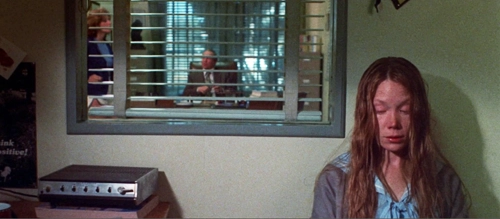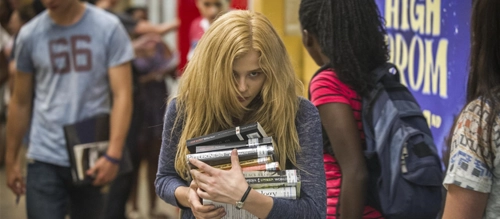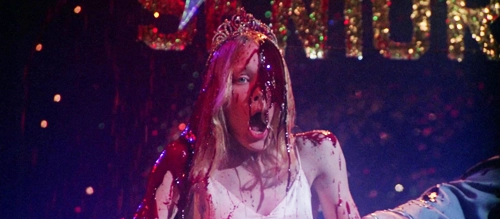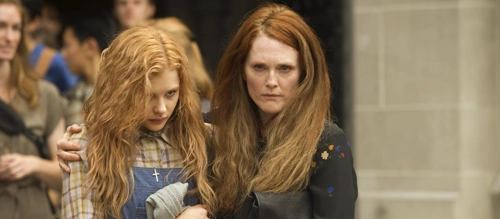Original vs Remake: Carrie (1976) vs Carrie (2013)
When it comes to remakes, it’s easy to scoff. How could anything possibly live up to the original? For the most part, such a sentiment rings true. However, there are notable exceptions.
Remakes get a bad reputation, but they can sometimes be a chance to breathe new life into outdated, tired material. They may even be an opportunity to say something that wasn’t said before, to offer a new perspective, to build on the foundations of the original. Films like The Thing (1982) and Scarface (1983) are examples of this in action.
On the other hand, remakes sometimes feel like repeats – a mere reiteration of what we’ve already seen. The 2013 remake of the 1976 horror classic Carrie, both based on Stephen King’s debut novel of the same name, belongs to the latter group. While the 1976 version is still horrifying and spellbinding more than 40 years later, the 2013 remake offers little in the way of innovation and creativity. It retraces every step the original already took, sleepwalking to its conclusion, never stopping to come up with anything new or noteworthy. We’ll discuss all of this and more in this edition of Original vs Remake.

Stephen King’s 1974 debut novel “Carrie” changed his life. Though it wasn’t considered a bestseller at the time, “Carrie” sold well enough for King to quit his teaching job and focus full-time on writing. It was enough to launch his career and revitalize the horror genre, bringing it out of the shadows and into mainstream success. The 1976 film adaptation of the novel, directed by Brian De Palma and starring Sissy Spacek in the title role, did a similar thing for audiences. The film was a widespread commercial and critical success, with Spacek and her on-screen mother Piper Laurie both receiving Academy Award nominations for their performances. Carrie remains one of the best Stephen King adaptations of all time.
The original 1976 film spawned several more iterations from an ill-received 1999 sequel to a 2002 made-for-television movie, and even a musical (originally staged in 1988). “Carrie” wasn’t adapted again until 2013. The film was directed by Kimberly Peirce, with Chloë Grace Moretz taking over the title role and Julianne Moore cast as her devout mother.

Both films revolve around a teenage girl named Carrie White, whose sheltered and deeply religious upbringing by her mother, Margaret, leads to intense bullying at school and a complete ignorance of the world around her, as well as her own body. When Carrie gets her first period at school, and is convinced she is dying because she doesn’t know what it is, all of the girls make fun of her and humiliate her. Soon, Carrie discovers that a power inside of her has awakened, and as that telekinetic power grows, Carrie begins to come out of her shell.
Of course, we all know how that ends. Prom. Pigs blood. Total destruction. While the story may be essentially the same across both films, they each deal with the source material in vastly different ways when it comes to writing, directing, and performance.
The original 1976 film is atmospheric and unnerving, aided by a truly terrifying score composed by Pino Donaggio, a frequent collaborator of director Brian De Palma. The film is hazy and colorful, the prom dripping in glitter and stars, Carrie’s home cloaked in shadow and covered in Catholic imagery. There isn’t any gore and there’s practically no bloodshed at all – aside from the obvious. Because blood is symbolic, it represents Carrie’s awakening and her ultimate destruction, it is used to excess only twice: when Carrie gets her period and when Carrie is drenched in pig’s blood as a prank by cruel Chris Hargensen (Nancy Allen) and her boyfriend, Billy Nolan (John Travolta). In its restraint, it is striking and shocking. In contrast, the 2013 Carrie leaves little to the imagination. Carrie’s destruction of the gym is filled with blood and gore, but it’s not very effective. It shows more, and to a horror enthusiast who enjoys a good death the explicit carnage might be a welcomed addition. Chris gets a particularly gruesome death, with her face smashing through the windshield of her car, but the scene is shot in such a way that it does little to inspire fear or disgust. Carrie does destroy more of the town, as she does in the novel, but the 1976 version’s choice to have her destroy only the school – the center of adolescent life – holds more weight, it means more.

Of course, the original 1976 film has the distinction of being directed by Brian De Palma, a master of suspense and style, whose decades-long career includes gems like the aforementioned Scarface, Phantom of the Paradise, and Body Double. Carrie is elevated beyond its script, which is unremarkable but competent, due to De Palma’s distinct visual prowess. His use of split screen and split dioptre gives Carrie a distinct visual style. De Palma’s ability to create suspense is also what makes Carrie so breathtaking to watch – knowing the bucket of blood is hanging there, just waiting for it to fall and praying that it doesn’t; screaming at the screen for Sue (Amy Irving) to get there in time to stop it. Even the way the locker room scene is shot in slow motion, the way it is sensual and carefree, and then, suddenly, blood begins to drip between Carrie’s legs – it feels like a punch to the gut.
Peirce, known for her 1999 debut Boys Don’t Cry, doesn’t seem to have the same visual flair as De Palma and the 2013 Carrie suffers because of it. It doesn’t have a consistent vision, which might not be completely the director’s fault. The film underwent reshoots, and the script (originally written by Roberto Augirre-Sacasa, creator of CW’s ‘Riverdale’), was re-written by Lawrence D. Cohen who wrote the 1976 version. Having Cohen do rewrites essentially turned the film into a bargain brand version of De Palma’s, with Cohen reusing whole scenes and chunks of dialog, including the insult, “Carrie White eats shit,” which no teenager in 2013 would ever say. The elements that were added, such as Margaret White having a job, are few and far between, and the only attempt at modernizing the story is when Chris takes a video of Carrie in the locker room and posts it online.

The 2013 adaptation of Carrie falls short when it comes to performances as well. Portia Doubleday and Gabriella Wilde are fine, if one-dimensional and boring as Chris and Sue respectively. Ansel Elgort, in his film debut, is a perfectly OK Tommy Ross, but Alex Russel certainly doesn’t have the on-screen charisma of Travolta, making Billy Nolan essentially a noncharacter. None of that would really matter though if Chloë Grace Moretz stuck the landing as Carrie. Unfortunately, the former child star, known for her roles in Kick-Ass and Let Me In, falls flat too. There is something about Moretz that makes her utterly unbelievable as a girl who has been bullied her whole life and abused by a religious bigot. Sure, she keeps her head down and she wears frumpy clothes and her hair is frizzy, but none of that is enough to convince us that Moretz is the character she is trying desperately to be. When Carrie begins her destruction of the gym, Moretz’s body movements are stiff and awkward. You’re never that scared of her, and being scared of her is supposed to be the whole point.

Sissy Spacek on the other hand, is utterly terrifying. Spacek is able to tap into Carrie’s naivety, her loneliness, but also her strength and power. Once that blood falls on her, she transforms in the blink of an eye. Her eyes are piercing and unblinking – completely devoid of emotion. That scene, that moment, is still one of the most horrifying things ever put to screen. While Moretz is always doing too much, Spacek knows that the true terror is in doing almost nothing at all. A simple head turn and the doors swing closed. A wave of her hand and the gym explodes into flames. In her stillness, Spacek is formidable.
It’s not a surprise that the 1976 adaptation of Carrie is superior to the 2013 adaptation in every aspect. From the production design to the cinematography and everything in between, De Palma crafted a horror masterpiece that still holds up today. The 2013 Carrie failed simply because it tried to mimic the success of a movie that was already made, only without any of its heart. By doing so, instead of going back to the source material and finding inspiration in King’s original novel and updating that material for a modern audience, the filmmakers ended up making something that is, frankly, a total waste of time.

